How to Teach Alphabets to Preschoolers in a Fun Way

Teach preschoolers the alphabet in a fun way by using interactive games and colorful visuals. Engage their senses and make learning enjoyable with hands-on activities and enthusiastic participation.
Teaching the alphabet to preschoolers is a crucial early learning milestone. However, it can be challenging to hold their attention and keep them engaged. To make the learning process enjoyable, it’s important to incorporate fun and interactive activities that appeal to their senses.
By utilizing games, colorful visuals, and hands-on experiences, you can create a stimulating environment that encourages active participation and fosters a love for learning. This article will explore various strategies and techniques to teach alphabets to preschoolers in a fun and engaging way, ensuring that they grasp the fundamental building blocks of language while having a great time.
Engaging Strategies For Alphabet Learning
Teaching the alphabet to preschoolers can be a fun and interactive experience. By using engaging strategies, you can capture their attention and make the learning process enjoyable. In this blog post, we will explore three creative approaches to teaching alphabets to preschoolers: interactive games, singing alphabet songs with engaging gestures, and alphabet scavenger hunts for tactile learning.
Interactive Games That Promote Letter Recognition
Interactive games are an excellent way to promote letter recognition among preschoolers. These games not only make learning fun but also enhance their cognitive and motor skills. Here are a few interactive game ideas:
- Alphabet Matching Game: Create a set of flashcards with uppercase and lowercase letters. Ask your preschooler to match the corresponding letters by placing them side by side.
- Letter Jump: Draw large letters on the ground using chalk. Call out a letter, and your child has to find and jump on that letter. This game combines physical activity with letter recognition.
- I Spy with Letters: Take turns with your child as you say, “I spy with my little eye, something that starts with the letter ___.” Encourage your child to identify and point out objects that begin with the announced letter.
Singing Alphabet Songs With Engaging Gestures
Music and movement are excellent ways to engage preschoolers in learning the alphabet. Singing alphabet songs with engaging gestures can help reinforce letter recognition and phonemic awareness. Here are a few popular alphabet songs:
- The A-B-C Song: Sing the traditional alphabet song, emphasizing each letter and encouraging your child to sing along. Use gestures to represent each letter, such as pointing to the letter or making the letter shape with your fingers.
- The Letter Sounds Song: Sing a song focusing on the sounds each letter makes. Incorporate gestures that mimic the sound or action associated with each letter. For example, hopping like a bunny for the letter B or pretending to be a snake slithering for the letter S.
- The Alphabet Action Song: Sing a song that combines the alphabet with movement. Assign different actions to each letter, such as clapping for C or spinning for S. Encourage your child to follow along and mimic the actions.
Alphabet Scavenger Hunts For Tactile Learning
Alphabet scavenger hunts provide a hands-on experience for preschoolers to explore and learn letters in their environment. These hunts help develop important tactile skills while engaging children in the learning process. Here’s how you can organize an alphabet scavenger hunt:
- Create a Scavenger Hunt List: Make a list of alphabet letters, either written or printed and hide them around the designated area. Assign a specific letter to each item.
- Exploration Time: Guide your preschooler to search for the hidden letters. Encourage them to touch and feel the letters as they find them.
- Letter Recognition: Once a letter is found, ask your child to identify it and name objects that start with that letter. Reinforce letter recognition by repeating the process for each letter found.
By incorporating interactive games, singing alphabet songs with engaging gestures, and alphabet scavenger hunts into your teaching routine, you can make alphabet learning a joyful experience for preschoolers. These strategies not only enhance their letter recognition skills but also foster a love for learning that will benefit them for years to come.
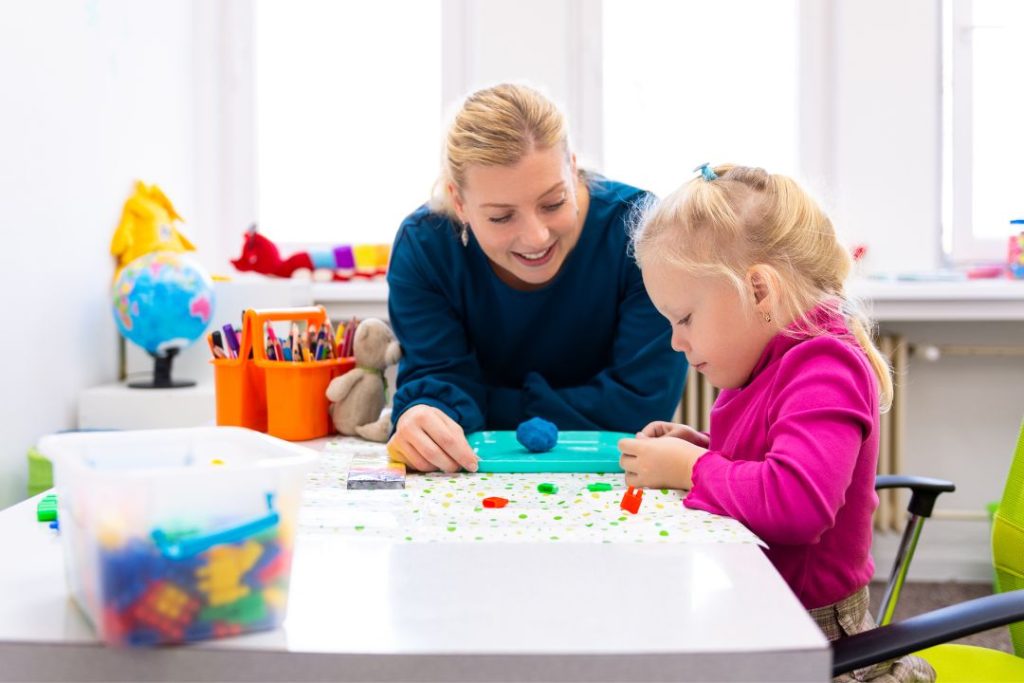
Incorporating Sensory Play
When it comes to teaching alphabets to preschoolers, incorporating sensory play is a fantastic way to make learning fun and engaging. Sensory play involves activities that stimulate your child’s senses, such as touch, sight, smell, and sound. By incorporating sensory elements into alphabet learning, you can help your preschooler develop their fine motor skills and increase their interest in letters and words. Here are three sensory play activities to teach alphabets to preschoolers in a fun way:
Crafting Letters With Play-doh Or Kinetic Sand
One exciting way to introduce alphabets to your preschoolers is by crafting letters with Play-Doh or kinetic sand. This tactile activity allows children to explore the shapes and forms of each letter while engaging their sense of touch. By rolling and shaping the dough or sand, they can form each letter and become familiar with its shape and structure.
Tracing Alphabets In Shaving Cream Or Rice
Another stimulating sensory play activity is tracing alphabets in shaving cream or rice. Spread a layer of shaving cream or rice on a flat surface and encourage your preschooler to use their finger or a paintbrush to trace the outline of each letter. This sensory-rich experience helps them develop fine motor skills, hones their hand-eye coordination, and enhances their tactile perception.
Letter Matching With Textured Flashcards
To make alphabet learning even more engaging, create textured flashcards for letter matching. Cut out large flashcards of each alphabet letter and attach different textures to them. For example, you can glue sandpaper on the flashcard for letter “A,” velvet fabric for letter “B,” or cotton balls for letter “C.” Encourage your preschooler to feel and touch the textures while matching each flashcard with its corresponding letter. This activity not only reinforces letter recognition but also provides a sensory experience that captures your child’s interest.
By incorporating sensory play into alphabet teaching, you can make learning exciting and memorable for your preschoolers. Whether it’s crafting letters with Play-Doh, tracing alphabets in sensory materials like shaving cream or rice, or using textured flashcards for letter matching, these sensory-rich activities help your child develop their fine motor skills, engage their senses, and foster a love for letters and words.
Visual Aids To Excite Preschoolers
Engage preschoolers in learning alphabets through captivating visual aids that make it fun and exciting. With interactive games, colorful flashcards, and creative techniques, teaching the ABCs becomes an enjoyable experience for young learners.
Colorful Alphabet Posters And Wall Decals/
Colorful alphabet posters and wall decals are a fantastic way to engage and excite preschoolers while teaching them alphabets. These visual aids not only introduce children to letters but also stimulate their imagination and creativity. By displaying these eye-catching visuals in the classroom or at home, you can create an interactive learning environment that captivates their attention and encourages active participation. Plus, the vibrant colors and attractive designs make the learning process enjoyable for little ones.
Whether you opt for large posters that showcase the entire alphabet at once or individual posters for each letter, these visual aids provide a visual representation of the letters that children can easily identify and relate to. They can refer to these posters whenever they want to practice or familiarize themselves with a specific letter. With colorful illustrations and contrasting backgrounds, these posters and wall decals effortlessly capture the curiosity of preschoolers, making alphabet learning an exciting adventure.
Creating A Personalized Alphabet Book
Another engaging way to teach alphabets to preschoolers is by creating a personalized alphabet book. By involving children in the creation process, you not only make it more enjoyable but also enhance their sense of ownership, making the learning experience more meaningful for them.
Start by preparing a blank book or using a blank notebook or scrapbook. Each page of the book should focus on a single letter of the alphabet. You can either write or print the letter at the top, followed by a corresponding picture or drawing that represents an object or animal with the same beginning sound. Encourage children to come up with their own ideas for each letter, and let them decorate the pages with colors, stickers, or other craft supplies. This personalized touch makes the alphabet book unique and special to each child.
As you create the alphabet book together, introduce new letters one by one, allowing children to explore and practice the sounds and shapes of the letters. Reading the personalized alphabet book regularly with the child not only reinforces their letter recognition but also strengthens their vocabulary and language skills.
Animated Alphabet Videos That Tell A Story
Animated alphabet videos that tell a story are an excellent way to capture the attention and spark the curiosity of preschoolers. These captivating videos bring the letters to life by incorporating visuals, catchy songs, and engaging narratives. By combining visual and auditory stimulation, these videos create a multi-sensory learning experience that aids in the retention and understanding of alphabets.
Look for animated alphabet videos that follow a storyline or feature characters that interact with the letters. These videos typically introduce the letters in a memorable and entertaining way, making it easier for children to remember them. Whether it’s a group of animals embarking on an adventure to find the missing letters or a fun sing-along that incorporates movement and dance, these videos create a joyful learning atmosphere for preschoolers.
Watch the animated alphabet videos together with the child, encouraging them to actively participate by singing along, mimicking the actions, or pointing out the letters they recognize. This interactive approach not only makes the learning process enjoyable but also reinforces letter recognition and builds a strong foundation for early literacy skills.
The Art Of Storytelling
When it comes to teaching alphabets to preschoolers, one of the most effective and engaging methods is through the art of storytelling. Young children have a natural inclination towards stories and characters, making it the perfect opportunity to introduce them to the world of letters in a fun and interactive way. By associating each letter with a story or character, dress-up days featuring different alphabet-themed costumes, and puppet shows that introduce letters interactively, preschoolers can learn their ABCs while having a blast.
Associating Each Letter With A Story Or Character
Children thrive when learning is incorporated into stories and characters they can relate to. Associate each letter of the alphabet with a unique story or character, making the learning experience more exciting and memorable. For instance:
| Letter | Story/Character |
|---|---|
| A | Amy the Astronaut: Amy loves exploring space and adventures. She teaches children about the letter A while taking them on cosmic journeys! |
| B | Billy the Bear: Billy is a friendly bear who loves to play. He teaches children about the letter B while having fun in the forest! |
| C | Clara the Cat: Clara is a curious cat who loves learning. She teaches children about the letter C while exploring different objects and places! |
By associating each letter with a story or character, children can easily remember and recognize them, enhancing their overall learning experience.
Dress-up Days Featuring Different Alphabet-themed Costumes
Another fun way to teach alphabets to preschoolers is by organizing dress-up days featuring different alphabet-themed costumes. Each day, children can come dressed as a character or object that starts with the corresponding letter. This hands-on approach not only makes learning enjoyable but also encourages creativity and imagination. Here are some ideas:
- A: Animal Day – Children can dress up as their favorite animals, such as elephants, lions, or pandas.
- B: Book Character Day – Children can come dressed as characters from their beloved storybooks.
- C: Career Day – Children can dress up as various professionals, like doctors, firefighters, or chefs.
With dress-up days, preschoolers will eagerly look forward to learning about different letters and their corresponding costumes.
Puppet Shows That Introduce Letters Interactively
Puppet shows have long been an entertaining way to captivate young minds. Introduce letters to preschoolers through interactive puppet shows where the puppets themselves act as wonderful teaching aids. Here’s how you can create an engaging puppet show:
- Letter Introduction: Start the show by introducing the letter of the day and its sound.
- Storyline: Build a storyline revolving around the puppet and its adventures related to the chosen letter.
- Interaction: Incorporate interactive elements where the puppet interacts with the children, asking them to identify objects or words associated with the letter.
- Songs and Rhymes: Include catchy songs and rhymes that reinforce the letter’s sound and recognition.
- Repetition: Repeat the puppet show with different scenarios and letters to ensure repeated exposure and reinforcement of alphabet knowledge.
Through interactive puppet shows, preschoolers actively engage with the letters, making the learning process enjoyable and effective.
Role Of Repetition And Routine
The role of repetition and routine is crucial in teaching alphabets to preschoolers. Young children thrive on consistency and repetition as it helps them internalize new information and skills. By incorporating daily alphabet practice routines, using alphabet puzzles and blocks routinely, and engaging in repetitive reading of alphabet-focused books, you can create a fun and effective learning environment for preschoolers. Let’s explore each of these techniques in detail:
Daily Alphabet Practice Routines
Establishing a daily alphabet practice routine sets a clear structure for your preschooler’s learning. Consistency is key, so try to allocate a specific time each day dedicated to alphabet activities. Here are some ideas to include in your routine:
- Start with a warm-up activity that captures your child’s attention, such as an alphabet song or dance.
- Introduce a specific letter each day and explore it through various activities.
- Engage your child in tracing and writing the letter using alphabet worksheets or a whiteboard.
- Practice letter recognition by playing games like “I Spy” or matching uppercase and lowercase letters.
- Encourage your child to practice letter sounds through interactive exercises or phonics games.
- Wrap up the routine by reviewing the letters learned so far through flashcards or a quick alphabet quiz.

Using Alphabet Puzzles And Blocks Routinely
Utilizing alphabet puzzles and blocks in your preschooler’s daily activities is an excellent way to reinforce their letter recognition and spatial skills. Here’s how you can incorporate them into your routine:
- Invest in a variety of alphabet puzzles and blocks that cover both uppercase and lowercase letters.
- Begin by introducing a few letters at a time and helping your child identify and place them correctly.
- Encourage your child to stack blocks or puzzle pieces to form letters, allowing for hands-on exploration.
- Praise their efforts and provide gentle guidance if needed, promoting a positive and encouraging learning environment.
- As your child becomes more confident, gradually increase the difficulty by introducing more letters or challenging them to spell simple words.
Repetitive Reading Of Alphabet-focused Books
Reading alphabet-focused books repetitively not only exposes your preschooler to letter recognition but also enhances their vocabulary and comprehension skills. Follow these steps to make the most of this activity:
- Select a range of alphabet-focused books that present letters in engaging and relatable ways.
- Read aloud to your child, emphasizing letter sounds and pointing out the corresponding letters on each page.
- Encourage active participation by asking questions and inviting your child to find and name specific letters.
- Repeat the reading of favorite alphabet books regularly, allowing your child to become familiar with the letters and words.
By incorporating repetition and routine, you can help your preschooler develop a strong foundation in alphabets while keeping the learning process enjoyable and engaging. Consistency is key, so stay committed to the daily practice routines, incorporate alphabet puzzles and blocks into playtime, and make reading alphabet books a regular part of your child’s day. With your guidance and a fun approach, your preschooler will soon excel in alphabet recognition and phonics.
How To Teach Alphabets To Preschoolers In A Fun Way: Engage, Educate, And Excite!
Teaching alphabets to preschoolers can be an exciting and interactive experience. By incorporating fun activities into their daily routine, utilizing technology, and organizing themed weeks, you can engage, educate, and excite preschoolers about the world of letters. Let’s explore these strategies in more detail:
Incorporating Alphabet Lessons Into Daily Activities
To make learning alphabets a seamless part of preschoolers’ daily routines, integrate alphabet lessons with their usual activities. Here are some ideas:
- Morning Circle Time: Start the day by gathering the children for circle time activities. Introduce a Letter of the Day, and encourage each child to think of words that begin with that letter. For example, if the letter is “A,” children can mention words like “apple,” “ant,” or “alligator.”
- Alphabet Walk: Take the children on an outdoor adventure. While walking, encourage them to spot objects that start with different letters. Let them shout out the letters as they find corresponding objects, such as “B” for “bird” or “T” for “tree.”
- Sensory Play: Create sensory bins or trays filled with materials that represent different letters. For example, for the letter “S,” you can fill a tray with sand, seashells, and plastic snakes. Let the children explore the objects while discussing their names and the sounds they make.
- Letter Snack: During snack time, prepare a variety of healthy snacks that start with different letters. For instance, offer carrot sticks for the letter “C,” sliced apples for “A,” or yogurt for “Y.” As children munch on their snacks, reinforce the association between the food and the corresponding letter.
Using Technology For Interactive Alphabet Apps
Technology can be a powerful tool to engage preschoolers in learning the alphabet. Interactive alphabet apps turn the process into a fun and interactive experience. Here’s how you can leverage technology:
- Letter Recognition Apps: Download educational apps that focus on letter recognition and associated sounds. These apps often incorporate games, puzzles, and interactive activities to reinforce learning. Children will enjoy matching letters, tracing their shapes, and hearing their sounds.
- Alphabet Songs and Videos: Utilize YouTube or other video platforms to find catchy alphabet songs and videos. Encourage children to sing along and imitate the actions associated with each letter. These videos provide a multisensory experience that aids in both learning and retention of letter knowledge.
- Virtual Alphabet Books: Explore digital alphabet storybooks with interactive features such as touch-activated animations or sound effects. These books allow children to interact with the story while practicing letter recognition.
Themed Weeks Focusing On A Group Of Letters
Organizing themed weeks around specific groups of letters provides a more immersive learning experience. Here’s how to implement themed weeks:
| Week 1 | Week 2 | Week 3 |
|---|---|---|
| Animal Adventure: Introduce letters related to animals. Each day, focus on a different animal and its corresponding letter. Engage children in animal-themed crafts, songs, stories, and games while building their alphabetic knowledge. | Nature Discoveries: Explore the alphabet through nature. Concentrate on letters associated with plants, fruits, and the environment. Encourage children to collect leaves or draw pictures of flowers while connecting them to their corresponding letters. | Creative Construction: Dive into letters through construction-themed activities. Provide opportunities for children to build with blocks, create letter-shaped structures, and engage in imaginative play with construction toys. |
By incorporating alphabet lessons into daily activities, utilizing technology to enhance engagement, and organizing themed weeks, teaching alphabets to preschoolers can be a rewarding and enjoyable experience. With these strategies, children will be excited to explore the world of letters, paving the way for a strong foundation in reading and language skills.
Frequently Asked Questions Of How To Teach Alphabets To Preschoolers In A Fun Way
How Do You Teach Kids The Alphabet In A Fun Way?
Teaching kids the alphabet can be fun! Use interactive games, songs, and colorful visuals to engage them. Incorporate hands-on activities like alphabet puzzles or letter matching games. Make it enjoyable by creating a letter scavenger hunt or using letters to create art.
How Can I Help My Preschooler Learn The Alphabet?
To help your preschooler learn the alphabet, engage in daily activities like singing the ABC song, playing with alphabet puzzles or flashcards, reading alphabet books, and involving them in writing activities. Make it fun and interactive to keep them engaged and motivated to learn.
How To Teach Alphabets To Preschoolers In A Fun Way Online?
Teaching alphabets to preschoolers online can be fun! Use interactive games, songs, and colorful visuals. Engage them in letter recognition activities and encourage hands-on learning. Make use of educational websites, apps, and videos designed specifically for preschoolers. Keep lessons short and play-based to maintain their interest.
How Is The Alphabet Introduced In Preschool?
Preschool introduces the alphabet through fun activities and games, like tracing letters, playing with letter blocks, and singing alphabet songs. Teachers use visual aids and interactive tools to engage children and make learning enjoyable.
Conclusion
To conclude, teaching alphabets to preschoolers can be a fun and engaging experience. By incorporating interactive activities, such as using toys and games, singing songs, and creating hands-on projects, children can develop a strong foundation in literacy skills. Remember to keep the learning process age-appropriate, utilize repetition, and provide positive reinforcement.
With these strategies, you can effectively make alphabet learning an enjoyable adventure for your preschoolers.

Emily specializes in integrating arts into early childhood education. She believes in fostering creativity and imagination through music, art, and drama activities.


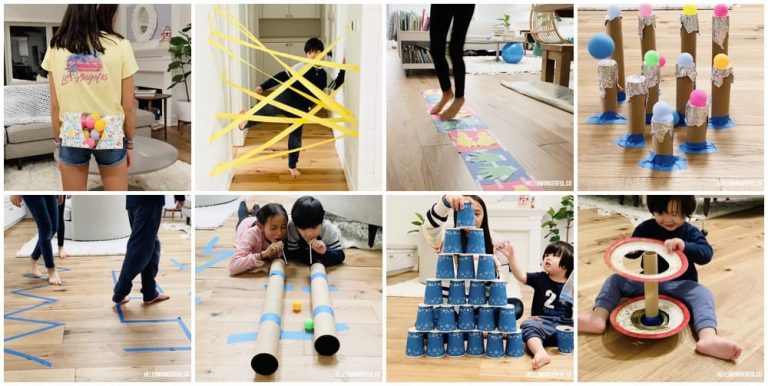
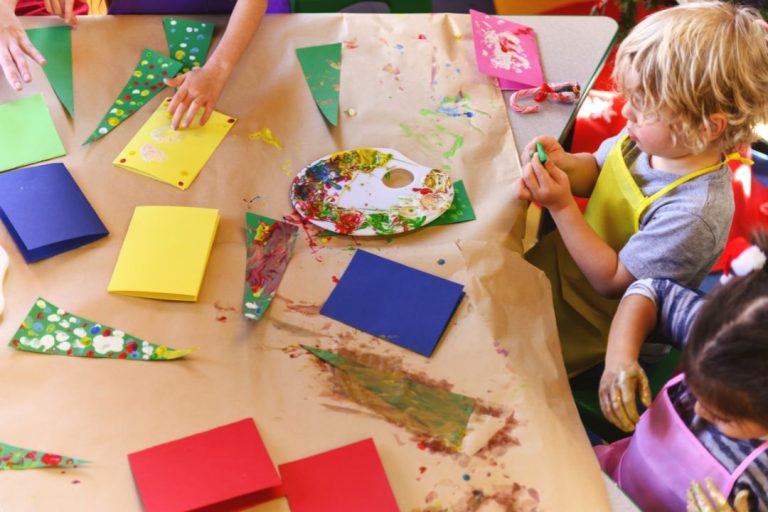
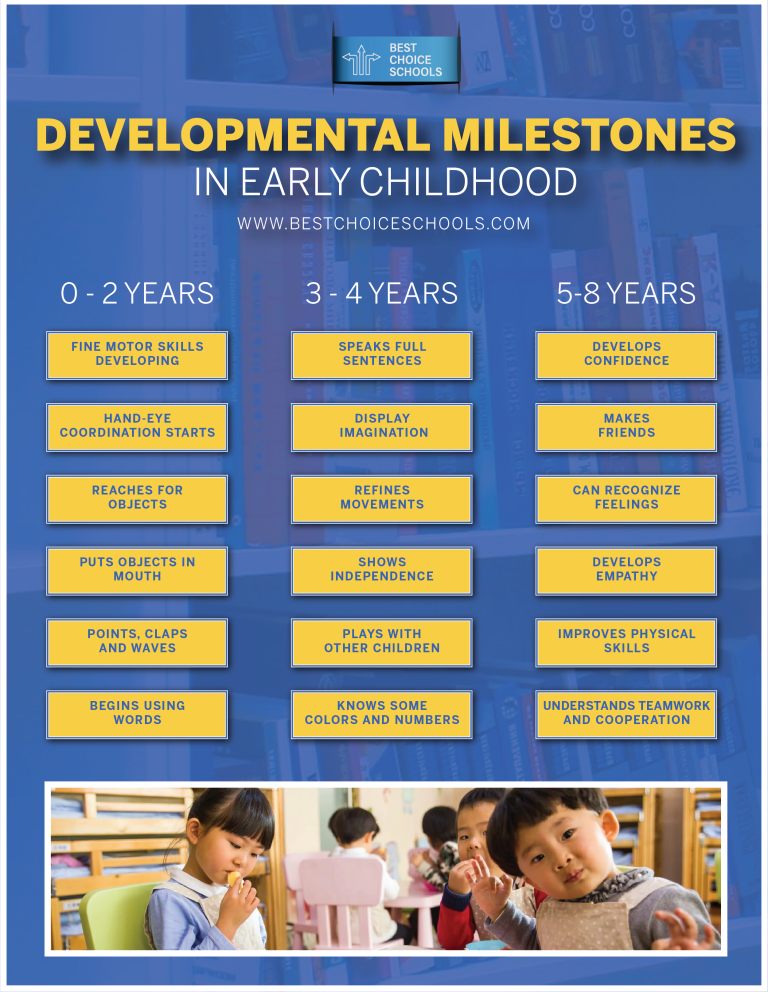

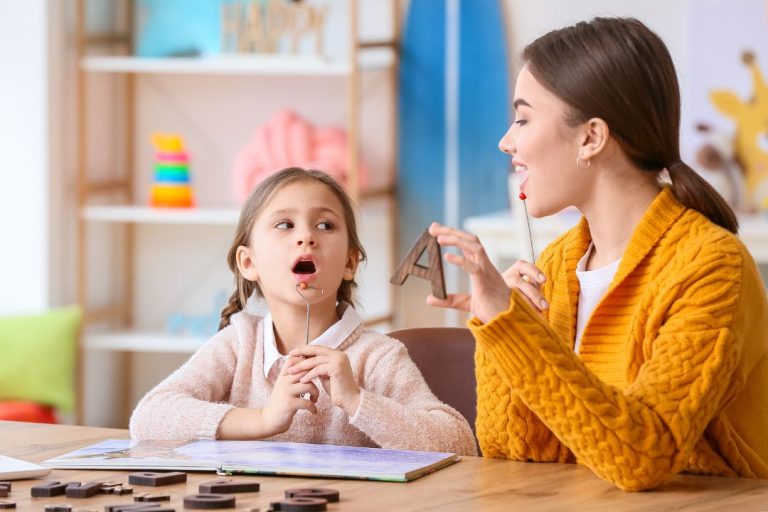
One Comment